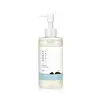What's inside
What's inside
 Key Ingredients
Key Ingredients

 Benefits
Benefits

 Concerns
Concerns

 Ingredients Side-by-side
Ingredients Side-by-side

Camellia Sinensis Leaf Water
MaskingButylene Glycol
HumectantGlycerin
HumectantWater
Skin ConditioningEthylhexyl Palmitate
EmollientCetyl Ethylhexanoate
Emollient1,2-Hexanediol
Skin ConditioningPentaerythrityl Tetraethylhexanoate
EmollientPanthenol
Skin ConditioningOryza Sativa Extract
AbsorbentHibiscus Esculentus Fruit Extract
Skin ConditioningCamellia Sinensis Leaf Extract
AntimicrobialLaminaria Japonica Extract
Skin ProtectingArtemisia Vulgaris Extract
Skin ConditioningCentella Asiatica Extract
CleansingRosmarinus Officinalis Leaf Extract
AntimicrobialPhytosphingosine
Skin ConditioningCaproyl Sphingosine
Skin ConditioningTocopherol
AntioxidantGlyceryl Glucoside
HumectantHydrolyzed Hyaluronic Acid
HumectantTrehalose
HumectantJojoba Esters
EmollientHelianthus Annuus Seed Oil
EmollientHydrolyzed Jojoba Esters
Skin ConditioningGlyceryl Acrylate/Acrylic Acid Copolymer
HumectantCetyl Alcohol
EmollientHydrogenated Lecithin
EmulsifyingAmmonium Acryloyldimethyltaurate/Vp Copolymer
Hydrogenated Polydecene
EmollientEthylhexylglycerin
Skin ConditioningCyclohexasiloxane
EmollientCamellia Sinensis Leaf Water, Butylene Glycol, Glycerin, Water, Ethylhexyl Palmitate, Cetyl Ethylhexanoate, 1,2-Hexanediol, Pentaerythrityl Tetraethylhexanoate, Panthenol, Oryza Sativa Extract, Hibiscus Esculentus Fruit Extract, Camellia Sinensis Leaf Extract, Laminaria Japonica Extract, Artemisia Vulgaris Extract, Centella Asiatica Extract, Rosmarinus Officinalis Leaf Extract, Phytosphingosine, Caproyl Sphingosine, Tocopherol, Glyceryl Glucoside, Hydrolyzed Hyaluronic Acid, Trehalose, Jojoba Esters, Helianthus Annuus Seed Oil, Hydrolyzed Jojoba Esters, Glyceryl Acrylate/Acrylic Acid Copolymer, Cetyl Alcohol, Hydrogenated Lecithin, Ammonium Acryloyldimethyltaurate/Vp Copolymer, Hydrogenated Polydecene, Ethylhexylglycerin, Cyclohexasiloxane
Ethylhexyl Stearate
EmollientSorbeth-30 Tetraoleate
EmulsifyingDiisostearyl Malate
EmollientEthylhexylglycerin
Skin ConditioningWater
Skin ConditioningOenothera Biennis Oil
EmollientLimnanthes Alba Seed Oil
Skin ConditioningPersea Gratissima Oil
Skin ConditioningVitis Vinifera Seed Oil
EmollientCanola Oil
EmollientMacadamia Integrifolia Seed Oil
Skin ConditioningSea Water
HumectantButylene Glycol
HumectantAllantoin
Skin ConditioningPanthenol
Skin Conditioning1,2-Hexanediol
Skin ConditioningCaprylic/Capric Triglyceride
MaskingPhosphatidylcholine
EmulsifyingHyaluronic Acid
HumectantCeramide NP
Skin ConditioningGlycine
BufferingHydrolyzed Hyaluronic Acid
HumectantGlutamic Acid
HumectantSerine
MaskingSodium Hyaluronate
HumectantLysine
Skin ConditioningAlanine
MaskingArginine
MaskingThreonine
Proline
Skin ConditioningCitrus Aurantium Bergamia Fruit Oil
MaskingSalvia Officinalis Oil
MaskingTocopherol
AntioxidantEthylhexyl Stearate, Sorbeth-30 Tetraoleate, Diisostearyl Malate, Ethylhexylglycerin, Water, Oenothera Biennis Oil, Limnanthes Alba Seed Oil, Persea Gratissima Oil, Vitis Vinifera Seed Oil, Canola Oil, Macadamia Integrifolia Seed Oil, Sea Water, Butylene Glycol, Allantoin, Panthenol, 1,2-Hexanediol, Caprylic/Capric Triglyceride, Phosphatidylcholine, Hyaluronic Acid, Ceramide NP, Glycine, Hydrolyzed Hyaluronic Acid, Glutamic Acid, Serine, Sodium Hyaluronate, Lysine, Alanine, Arginine, Threonine, Proline, Citrus Aurantium Bergamia Fruit Oil, Salvia Officinalis Oil, Tocopherol
 Reviews
Reviews

Ingredients Explained
These ingredients are found in both products.
Ingredients higher up in an ingredient list are typically present in a larger amount.
1,2-Hexanediol is a synthetic liquid and another multi-functional powerhouse.
It is a:
- Humectant, drawing moisture into the skin
- Emollient, helping to soften skin
- Solvent, dispersing and stabilizing formulas
- Preservative booster, enhancing the antimicrobial activity of other preservatives
Butylene Glycol (or BG) is used within cosmetic products for a few different reasons:
Overall, Butylene Glycol is a safe and well-rounded ingredient that works well with other ingredients.
Though this ingredient works well with most skin types, some people with sensitive skin may experience a reaction such as allergic rashes, closed comedones, or itchiness.
Learn more about Butylene GlycolEthylhexylglycerin (we can't pronounce this either) is commonly used as a preservative and skin softener. It is derived from glyceryl.
You might see Ethylhexylglycerin often paired with other preservatives such as phenoxyethanol. Ethylhexylglycerin has been found to increase the effectiveness of these other preservatives.
Hydrolyzed Hyaluronic Acid is a form of hyaluronic acid. It is created by the hydrolysis of hyaluronic acid with a high molecular weight. Once created, Hydrolyzed Hyaluronic Acid has a low molecular weight.
Low molecular weight HA has been shown to hydrate and increase elasticity of the skin. Increasing elasticity is also associated with reduction of wrinkle depth.
One study found topical low molecular weight hyaluronic acid may be considered for the treatment of rosacea in the adult population. However, we always recommend speaking with a professional about your skin concerns.
Hyaluronic acids are a humectant. This means they draw moisture from the air. Hyaluronic acids help moisturize, soothe, and protect the skin.
Read more about other common forms of hyaluronic acid:
Learn more about Hydrolyzed Hyaluronic AcidPanthenol is a common ingredient that helps hydrate and soothe the skin. It is found naturally in our skin and hair.
There are two forms of panthenol: D and L.
D-panthenol is also known as dexpanthenol. Most cosmetics use dexpanthenol or a mixture of D and L-panthenol.
Panthenol is famous due to its ability to go deeper into the skin's layers. Using this ingredient has numerous pros (and no cons):
Like hyaluronic acid, panthenol is a humectant. Humectants are able to bind and hold large amounts of water to keep skin hydrated.
This ingredient works well for wound healing. It works by increasing tissue in the wound and helps close open wounds.
Once oxidized, panthenol converts to pantothenic acid. Panthothenic acid is found in all living cells.
This ingredient is also referred to as pro-vitamin B5.
Learn more about PanthenolTocopherol (also known as Vitamin E) is a common antioxidant used to help protect the skin from free-radicals and strengthen the skin barrier. It's also fat soluble - this means our skin is great at absorbing it.
Vitamin E also helps keep your natural skin lipids healthy. Your lipid skin barrier naturally consists of lipids, ceramides, and fatty acids. Vitamin E offers extra protection for your skin’s lipid barrier, keeping your skin healthy and nourished.
Another benefit is a bit of UV protection. Vitamin E helps reduce the damage caused by UVB rays. (It should not replace your sunscreen). Combining it with Vitamin C can decrease sunburned cells and hyperpigmentation after UV exposure.
You might have noticed Vitamin E + C often paired together. This is because it is great at stabilizing Vitamin C. Using the two together helps increase the effectiveness of both ingredients.
There are often claims that Vitamin E can reduce/prevent scarring, but these claims haven't been confirmed by scientific research.
Learn more about TocopherolWater. It's the most common cosmetic ingredient of all. You'll usually see it at the top of ingredient lists, meaning that it makes up the largest part of the product.
So why is it so popular? Water most often acts as a solvent - this means that it helps dissolve other ingredients into the formulation.
You'll also recognize water as that liquid we all need to stay alive. If you see this, drink a glass of water. Stay hydrated!
Learn more about Water